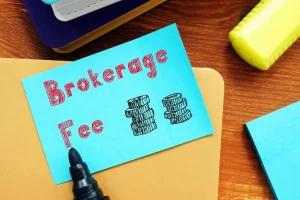Many potential investors are dissuaded from buying crypto, fearing for the safety of their assets. Due to dApps, traders can conduct direct transactions with other members without relying on the services provided by intermediaries. However, diversifying a portfolio and leveraging price fluctuations may be daunting without secure storage. While centralized platforms offer custodial services, this option is hardly suitable for those who value anonymity. Beginners often find it challenging to ensure the safety of their holdings. In this guide, we will explain how to secure your crypto wallet and trade digital assets without any issues.
Are There Any Crypto Wallet Security Issues?
Investors need help with trying to protect virtual assets. Unlike fiat currencies, such holdings are considered risky due to the following threats a trader may have to deal with:
- Deanonymization: Hackers can identify a wallet owner by tracing transactions using a compromised service.
- Denial-of-service attack: Malicious actors can access a cryptocurrency wallet by sending too many requests. If it becomes overloaded, it won’t be able to function without any glitches.
- Authentication problems: Unless a trader utilizes an advanced solution with top-grade protection measures, they risk losing funds.
- Unreliable platforms: When web-based trading sites storing private keys from digital wallets are compromised, users risk losing access to their assets.
Third-party wallet apps for storing cryptocurrencies are unreliable. Some do not follow strict security guidelines, making them hardly suitable for investors. Even though many services utilize two-factor authentication (2FA), they may deploy basic random number generators, which makes them less secure.
Traders should be ready to address these issues and take the necessary steps to protect digital wallets. By educating themselves on the importance of generating strong passwords and storing private keys securely, digital asset holders can protect their funds.


Turnkey Brokerage Solution For Your Business
Get the most profitable fully licensed fx/crypto brokerage software or ready-to-operate business in 48 hours. Best-in-class web & mobile trading platforms, sales-driven CRM, full integration with MT4/5, and 150+ payment providers.
How to Secure Your Crypto Wallet: Crucial Steps
As storing tokens on cryptocurrency platforms may be risky, traders are looking for reputable providers capable of ensuring the safety of their holdings. Before transferring crypto to a new wallet, it’s worth considering whether the service is trusted by other clients. By analyzing the available stats, it is possible to check how wallets associated with specific platforms are used and understand whether they are popular within the community.
Instead of using centralized exchanges (CEXs), utilize multiple wallets to protect assets. Asset holders should be wary of traditional custodial services. As Mt. Gox and FTX demonstrated, entrusting crypto to intermediaries is hardly a viable strategy for those who want to protect their holdings.
It’s recommended to use cold hardware wallets to store funds and utilize hot wallets to expedite transactions and daily operations. By spreading tokens across multiple wallets, investors protect themselves against possible theft. It’s better to avoid using third-party custodial sites.
Finding a solution that allows users to conduct all sorts of operations with crypto assets safely could be arduous. Follow the steps described below to streamline this process and protect your holdings.
1. Discover how to utilize self-custody solutions
Before purchasing crypto, traders should learn more about the existing exchange platforms. The best services have streamlined interfaces and realistic exchange rates. Besides, they support multiple payment methods. Examples of self-custody options include:
- Hardware wallets
- Mobile apps
- Desktop software
Cold wallets are one of the best solutions for those who want to store tokens offline. While many beginners avoid using them, they are popular among major investors who take the safety of their assets seriously.
Each type of wallet has its selling points and shortcomings. While software solutions are easy to use, they are more vulnerable to cyber-attacks. Paper wallets may get physically destroyed, while hardware products are reliable but challenging to utilize.
When using a multisig wallet, an investor can be sure a transaction won’t be finalized without multiple signatures. It means that a user can either sign a transaction from multiple devices or provide signatures jointly with other parties. While this approach requires some preparation, it deservedly remains quite popular among those who want to protect funds.
If a user utilizes a hardware wallet, they should update software regularly to ensure hackers won’t be able to exploit bugs. Developers regularly improve their products and introduce robust measures to make them virtually impenetrable.

2. Use multiple backup options
Many novice traders disregard this advice without realizing its effectiveness. Universally accepted crypto wallet security guidelines necessitate recording seed phrases right after creating a new key. Maintaining full control over assets requires coming up with a secure way to store the recovery phrase. Traders utilize different options:
- Metal plates
- Lock boxes
- Safes
Writing the seed phrase with a pen on a piece of paper is more reliable than storing this information online, where it could be accessed by unauthorized users. Avoid utilizing the in-built password manager or third-party note applications.
Keeping information offline prevents hackers from accessing it. Using a device like a USB or writing a seed phrase on paper keeps assets safe.
3. Utilize extra protection measures
Modern wallet providers take user satisfaction seriously and add 2FA to boost wallet security. Users have to use a code generated by an authenticator application to log in. When using some storage options, investors may need to enable 2FA if it is not activated by default.
If a trader worries other people may get access to their phones, they can turn on biometric data recognition or add an entry passcode. This way, their assets remain safeguarded against hackers and other malicious users. To utilize PIN protection, a user has to go to Settings and configure them to streamline the sign-in process.
An encrypted password is another reliable way to prevent unauthorized parties from stealing funds from a wallet. Such passwords are stored by users themselves, which ensures that nobody will access them.
4. Be mindful of scams
Phishing attempts become increasingly widespread. Novice users may accidentally disclose data. As a result, third-party actors access their accounts. It’s recommended to avoid signing up into a wallet using links from unreliable sources. They may come in emails or be posted on X threads. Beginners should be wary of airdrops, as such campaigns are often exploited by criminals.
Trusted wallet providers never ask users to disclose their recovery phrases or algorithmic keys. Nevertheless, as crypto scam methods continue to evolve, one should be wary of current trends and implement the strongest protection measures.
5. Keep track of activity
If you know how to secure your crypto wallet, you will be able to trade and store assets without risks. Monitoring the transaction history is also necessary to preserve control over assets. When hackers use the approval phishing method, they get access to user wallets by tricking them into signing the wrong transaction. This is why it’s pivotal to double-check the destination address multiple times before approving the funds’ transfer.
In some cases, the first and last digits of an address remain the same, so users think that the address has not been changed. However, such mistakes could be extremely expensive. It’s also advisable to check website domains carefully before downloading files.
Future of Crypto Wallet Security
Following emerging trends and becoming an early adopter of the newest technological solutions is necessary to protect virtual holdings in a changing environment. The development of advanced encryption methods, the introduction of biometric authentication, and the proliferation of smart contract use cases are the most likely developments that will shape the world in the coming years.
Implementing top-grade authentication practices will ensure that third parties won’t be able to access user wallets. Smart contracts facilitate automating security protocols and minimizing the risk of errors. Below, we have briefly described the key trends that will transform the industry:
- Split privacy keys: Top companies are already introducing upgraded security measures and use keys divided into multiple parts to protect digital holdings.
- Secure multiparty computation: Multiple parties perform computing and generate the algorithmic key together without disclosing individual inputs, which enhances the safety of crypto wallets.
- Decentralized identity solutions: Users will undergo the verification process without exposing their data. It will eliminate the threat of fraud.
After learning how to secure your crypto wallet, it’s essential to follow the steps described above to boost the safety of your assets. Investors can leverage modern technologies to safeguard their holdings and increase gains. The implementation of robust security measures is the first step toward widespread cryptocurrency adoption. Remaining conscious of possible threats and upgrading the existing mechanisms to ensure tokens’ safety is necessary for crypto investors who want to increase their gains.






